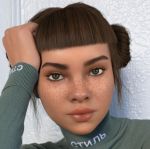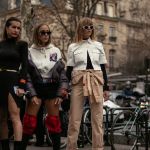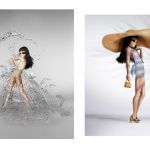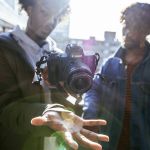
Fashion's New Fascination With Virtual Influencers is Very Questionable
Has the fashion industry become so inclusive of actual people that it needed to create virtual people?

May 21st, 2019
The word influencer has come to be known as what makes up a great section of the fashion industry. There exists a market of many different genres of social media influencers, such as micro influencers, nano influencers and child influencers. However, over the past few months, the industry has seen the rise of a different type of influencers: virtual influencers. These are Computer Generated Images (CGI’s) with a great mass of social media followers that have are being used by brands to do the work of what a human influencer would do. Such as attending fashion shows, shoot campaigns, make sponsored posts etc.
One of the most famous CGI characters is one called Lil Miquela. With an Instagram following of 1.5 million followers, this virtual influencer created in 2016, has since worked with brands and companies such as Calvin Klein, Dior, Prada, Tommy Hilfiger etc. and has been endorsed by several publications including King Kong and 032 and even holds a position at Dazed as a contributing beauty editor.
Another virtual influencer notorious in the world of fashion is one called Noonoouri. This animated personality originally created around 2018 with 286k followers, has worked with major names in the industry such as Dior, Louis Vuitton, Jacquemus, Schiaparelli, Givenchy, Versace, Jean Paul Gaultier and many others. These are only two examples of how these animated characters have been triumphing the fashion world. According to Tech Crunch, Brud — the company behind Lil Miquela and other virtual characters, is now worth at least $125 million. CBS News has recently revealed studies that predict the industry of computer-generated social media influencers to be worth at least $2 billion by 2020.For now, the industry doesn’t seem to be a threat against the work of human influencers but the success of these characters does raise some questions. Has the fashion industry become so inclusive of actual people of a different race, body type, gender etc. that it needed to create virtual people? There are still thousands of capable humans queued up longing for work inside the industry, yet we have opted for animated characters that look like humans, instead of actual humans.
The very fact that some of these characters are so resemblant of actual humans, and presented like actual human characters, also poses an ethical issue in itself. The general industry of influencer marketing is based on the idea of authenticity, of these people sharing parts of their daily lives promoting things and products they actually use and wear. Although human-like, virtual influencers will never be able to connect with audiences in a way that is genuine and credible as their very existence is inauthentic.These avatars may prove to be an easier option for brands to partner with as in most instances, the purpose of their creation is simply to promote a certain type of products and lifestyle, but has fashion become so robotic that we are so easily swayed and influenced by cartoons? And does the idea of someone sitting behind their computers anonymously creating influencers mean that brands can also create their own influencers?
The industry of virtual influencers raises many concerns in regards to their creators and the brands that use them but only time will tell if this new wave of computer-generated characters in fashion is actually here to stay or is simply just a phase.




















































